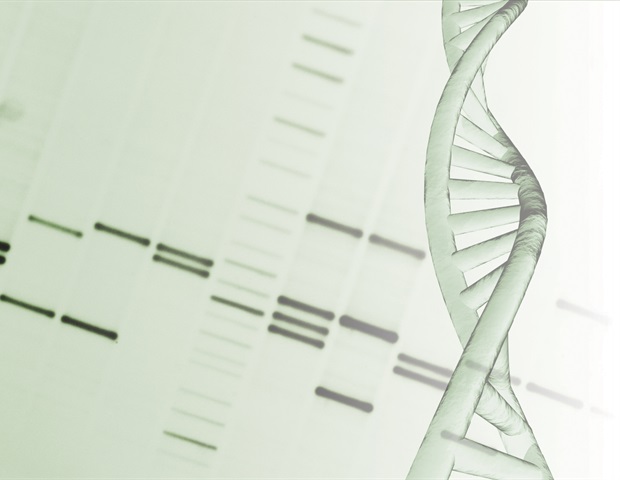
Hydrogels are polymeric supplies with three-dimensional community buildings containing giant quantities of water. They function sustained-release drug supply techniques as they’ll encapsulate varied bioactive substances, together with medication, antigens, and even cells. Hydrogels are higher drug supply options than standard techniques, as they’re extra biocompatible, biodegradable, and simply administered as an injectable scaffold.
DNA has gained important consideration as a promising hydrogel materials due to its customizable physicochemical properties, resulting in the event of assorted DNA hydrogels. Nevertheless, present strategies like DNA ligase-linked hydrogels current many challenges, together with potential allergic reactions and sophisticated administration procedures that restrict scientific functions.
Just lately, a polypod-like nanostructured nucleic acid, or polypodna, was constructed utilizing three or extra predesigned oligodeoxynucleotides (ODNs) with partially complementary sequences to handle these challenges. These environment friendly DNA nanostructures are simply injectable and readily reform into hydrogels on the injection web site after being injected. Whereas this strategy creates self-gelatinizing nucleic acids that kind hydrogels with out DNA ligase, it requires a number of ODNs, resulting in excessive preparation prices, design complexity, and an elevated likelihood of off-target results owing to the big variety of DNA bases concerned.
To deal with this, a Takumi-shaped DNA unit was shaped with solely two ODNs. Nevertheless, research investigating its optimization as a sustained-release drug service or its retention skill are restricted.
Of their new research, made out there on-line on December 2, 2024, and to be printed on January 10, 2025, in Quantity 377 of the Journal of Managed Launch, Professor Makiya Nishikawa, together with Mr. Jian Jin, Assistant Professor Shoko Itakura, and Affiliate Professor Kosuke Kusamori, from the Tokyo College of Science, Japan, aimed to handle these facets of Takumi-shaped DNA nanostructures.
Prof. Nishikawa defined the motivation behind the research, «Our aim was to miniaturize and optimize DNA nanostructures in order that steady DNA hydrogels might be shaped with fewer nucleic acids.»
Every ODN within the Takumi-shaped DNA construction was constructed with an eight-18 nucleotide-long palindromic stem hooked up to 2 cohesive components on both facet with a thymidine (T) spacer. The ODNs kind a self-dimer by way of the palindromic sequence, and every ODN was named in keeping with the variety of nucleotides within the stem and cohesive components. As an example, 14s-(T-10c)2 refers to an ODN with a stem size of 14 nucleotides and a cohesive a part of 10 nucleotides situated at each ends of the stem.
To optimize the Takumi-shaped DNA as an injectable hydrogel unit with sustained retention, researchers systematically designed varied ODN lengths and investigated the correlation between structural properties and hydrogel efficiency, with a particular concentrate on in vivo retention capabilities.
Their findings confirmed that the hydrogel properties, akin to melting temperatures and stability, rely upon the size of the stem and the cohesive components. ODNs with stem lengths of 12 nucleotides or longer effectively shaped the hydrogel items, suggesting {that a} 12-nucleotide-long stem is sufficient for unit formation. Equally, cohesive components demonstrated efficient hybridization and interactions at a size of 10 nucleotides.
The researchers additionally assessed the storage modulus of hydrogels, which helps perceive how the hydrogel adjustments beneath completely different bodily circumstances, by various lengths of cohesive components, demonstrating that 10-nucleotide-long GC-rich cohesive components exhibit higher thermal stability and storage modulus in comparison with different formations.
«The size of the 12s-(T-10c)2-ODN, which confirmed the best retention in mice, was 34 bases, requiring solely two ODNs to kind. In complete, simply 68 nucleotides had been wanted for DNA hydrogel formation-markedly lesser than the hexapodna-based DNA hydrogel composed of twelve completely different 40-base lengthy ODNs,» explains Prof. Nishikawa about how their research has achieved environment friendly hydrogel formation with minimal DNA items.
In vivo experiments with doxorubicin-intercalated DNA hydrogels of 12s-(T-10c)2-ODNs confirmed extended persistence of no less than 168 hours post-administration, contributing to pronounced anti-tumor results in mice, because of the sustained launch of doxorubicin on the web site of injection. Moreover, Takumi-shaped DNA hydrogels may doubtlessly induce focused immune responses, making them efficient antigen-delivery techniques. «The optimized DNA hydrogel ready utilizing 12s-(T-10c)2 exhibited a extra sustained retention than the hexapodna-based DNA hydrogel after in vivo administration in mice. These outcomes spotlight the applicability of DNA hydrogels as supply techniques for bioactive supplies,» concludes Prof. Nishikawa.
General, this research demonstrates how minimal DNA items can assemble to kind biocompatible hydrogels with excessive retention instances and sustained drug launch capabilities, providing a promising biomedical innovation for focused therapies.
Supply:
Journal reference:
Jin, J., et al. (2025). Biocompatible DNA hydrogel composed of minimized Takumi-shaped DNA nanostructure reveals sustained retention after in vivo administration. Journal of Managed Launch. doi.org/10.1016/j.jconrel.2024.11.052.

